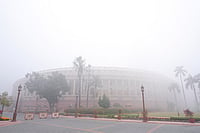
1. The tariffs place India among the most heavily taxed US trading partners, alongside Brazil, and far above competitors.
2. A US delegation is scheduled to arrive in New Delhi for the sixth round of talks on a long-pending bilateral trade agreement.
3. On the economic front, experts note that while the tariffs are painful for exporters, the overall GDP impact remains limited
India’s export sector is bracing for a significant blow as the United States moves to impose an additional 25% tariff on Indian goods, taking the total tariff burden to 50% on a large volume of exports. The move comes in response to India’s continued import of discounted oil from Russia and follows a reciprocal tariff announced just last week.
The tariffs place India among the most heavily taxed US trading partners, alongside Brazil, and far above competitors like Vietnam, Bangladesh and China. Ironically, China, which imported more Russian oil than India in 2024, has avoided similar punitive action.
A Barclays India report viewed the new tariffs as more of a pressure tactic than a long-term economic measure, suggesting they may still be rolled back or softened depending on the outcome of talks. The scope of the secondary tariff has already been narrowed from all Russian defense and energy imports to just crude oil. “A final deal will likely see some concessions on US oil and defense purchases, but India is unlikely to bend on its agri and dairy positions,” the report said.
The timing of the tariffs, and the 21-day grace period before full implementation, suggest that the measure is as much a negotiating tactic as it is a punitive step. A US delegation is scheduled to arrive in New Delhi on August 25 for the sixth round of talks on a long-pending bilateral trade agreement. Washington is likely pushing for greater access to India’s markets, especially for agricultural and dairy products, issues where New Delhi has consistently drawn red lines.
India has already dismissed the new tariff actions as “unjustified and unreasonable,” reiterating that its energy policy is designed to ensure affordable and predictable supplies for its 1.4 billion citizens. While India’s reliance on Russian oil rose from 2.7% in FY21-22 to 26% in FY24-25, the government has already begun to diversify supply sources, with US-origin crude now comprising nearly 10% of its oil imports. Global oil prices have also dropped nearly $9 per barrel since last year, easing the transition.
On the economic front, experts note that while the tariffs are painful for exporters, the overall GDP impact remains limited. Economists are urging the government to focus on leveraging its FTA network, particularly with the UK, EU, and ASEAN, while exploring bundled offerings and digital platforms to mitigate short-term losses. With careful balancing, India could absorb the short-term shocks while repositioning its trade architecture for long-term resilience.


























